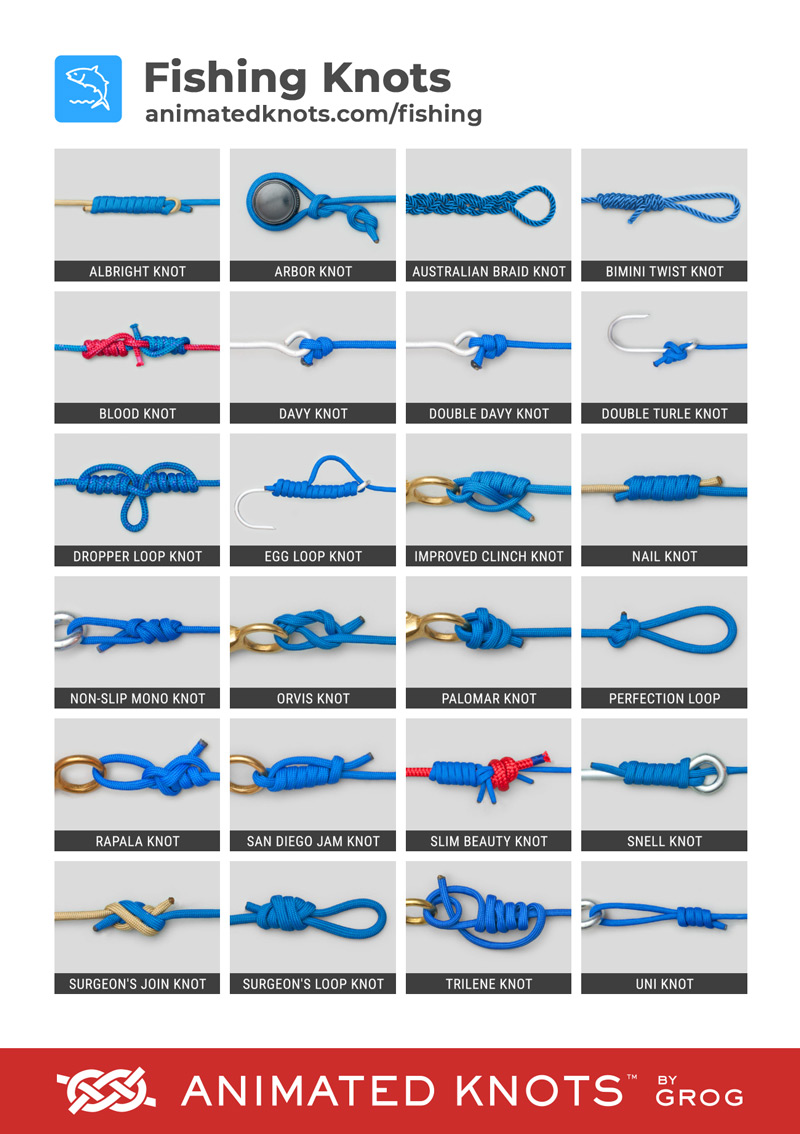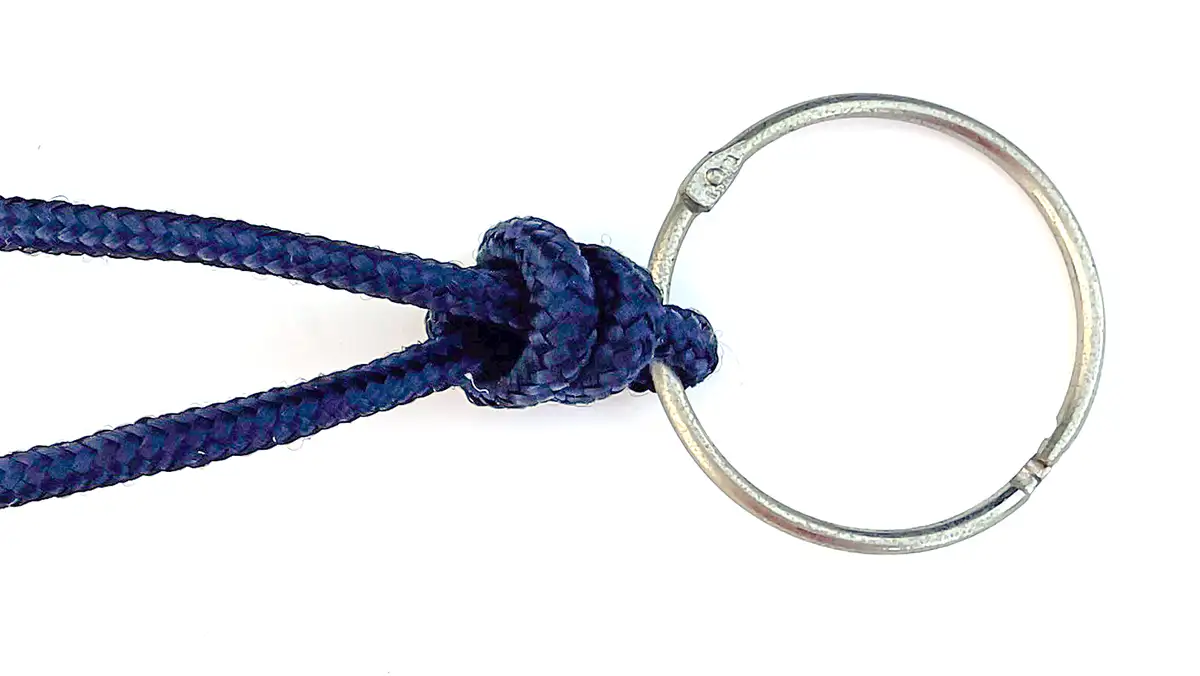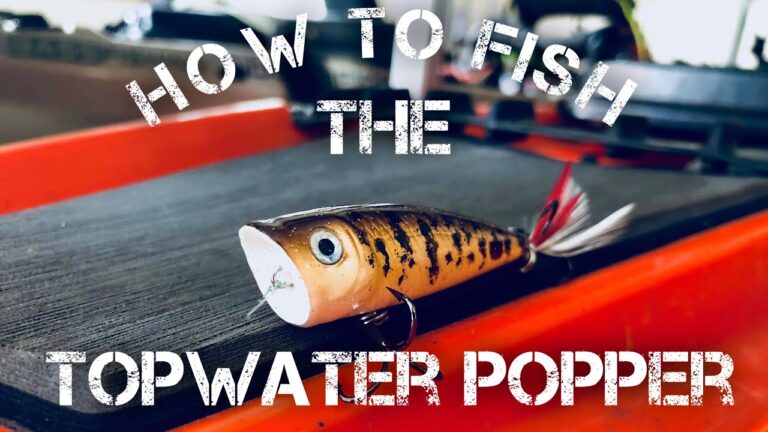How to Tie a Slip Knot for Fishing
A slip knot is essential for any angler. It’s easy to learn and versatile.
Fishing often requires different knots for various situations. One of the most useful and simple knots to master is the slip knot. This knot is not only strong but also adjustable, making it perfect for securing hooks, lures, and other tackle.
Whether you’re a beginner or an experienced fisherman, knowing how to tie a slip knot can improve your fishing experience. In this guide, we’ll walk you through the steps to tie a slip knot for fishing, ensuring you’re well-prepared for your next fishing adventure.
Introduction To Slip Knots
Slip knots are fundamental in the world of fishing. Their simple design and effectiveness make them a favorite among anglers. Whether you are a beginner or a seasoned fisherman, knowing how to tie a slip knot can enhance your fishing experience.
Importance In Fishing
Slip knots play a crucial role in fishing. They allow for easy adjustment of your line, making it simpler to control the bait’s depth. This flexibility is essential for targeting different fish species. Slip knots are reliable and can withstand the tension created by a struggling fish.
Furthermore, slip knots are easy to tie and untie, which saves time. This quick adjustment can be the difference between catching a fish or losing it. The ability to quickly change your setup is invaluable in dynamic fishing conditions.
Brief History
The history of slip knots dates back to ancient times. Early fishermen used basic knots to secure their lines and hooks. Over time, these knots evolved into more specialized forms, including the slip knot. Different cultures and regions developed their own variations, each suited to local fishing conditions.
As fishing techniques advanced, so did the sophistication of the knots. The slip knot became popular due to its versatility and strength. Fishermen passed down their knowledge through generations, refining the techniques and ensuring the slip knot remained a staple in fishing.
Today, the slip knot is still widely used. It continues to be a vital part of every angler’s skill set. Its history is a testament to its enduring effectiveness and reliability.
Materials Needed
Before you learn how to tie a slip knot for fishing, you need to gather the right materials. Having the proper tools and fishing lines ensures your knot is strong and reliable. Let’s explore what you need.
Essential Tools
You need a few basic tools to tie a slip knot. A pair of sharp scissors is essential. They help you cut the fishing line cleanly. A needle-nose plier is also useful. It helps you handle small parts of the line. You may also want a knot-tying tool. It makes the process easier for beginners.
Recommended Fishing Lines
Choosing the right fishing line is important. Monofilament lines are a popular choice. They are easy to handle and tie. Braided lines are also good. They are strong and durable. Fluorocarbon lines are another option. They are nearly invisible in water. Each type of line has its own benefits. Pick the one that suits your fishing needs best.
Basic Slip Knot Technique
Learning to tie a slip knot is essential for any angler. This knot is simple yet effective. It allows you to adjust the loop size easily, making it ideal for fishing. Let’s dive into the Basic Slip Knot Technique and get you started on your fishing journey.
Step-by-step Guide
- Start with a piece of fishing line. Make a loop by crossing the line over itself.
- Wrap the short end around the standing line. Do this at least twice.
- Thread the short end through the loop you made first.
- Hold both ends of the line and pull them tight. This will form your slip knot.
- Adjust the loop size by pulling the standing line.
Common Mistakes
- Incorrect Wrapping: Make sure to wrap the short end around the standing line at least twice.
- Loose Knot: Always pull both ends tight to secure the knot.
- Wrong Loop Size: Adjust the loop size only after the knot is tight.
Advanced Slip Knot Variations
Advanced slip knot variations can enhance your fishing experience. They provide greater strength and reliability. Mastering these variations ensures you handle different fishing scenarios with ease.
Improved Slip Knot
The improved slip knot offers extra security. Start by making a loop with the fishing line. Pass the tag end through the loop. Wrap it around the standing line several times. Five to six wraps work best.
Next, pass the tag end back through the original loop. Moisten the knot and pull it tight. This knot reduces the chance of slipping. It’s ideal for heavier catches.
Double Slip Knot
The double slip knot provides extra strength. Begin with a basic slip knot. But, before tightening, create an additional loop. Pass the tag end through both loops.
Wrap the tag end around the standing line. Do this at least four times. Finally, pass the tag end through both loops again. Moisten the knot and pull it tight. This knot handles high tension well. It’s perfect for large fish.
Tips For Securing The Knot
Learn how to tie a slip knot for fishing. This knot ensures your line stays secure while casting. Follow these simple steps to improve your fishing experience.
Securing a slip knot is vital for a successful fishing trip. A poorly tied knot can lead to lost fish and frustration. Follow these tips to ensure your knot holds firm.Tightening Tips
Slowly tighten the knot. This prevents the line from weakening. Make sure the loops lay flat and even. Use your fingers to adjust them as you pull. Wet the knot before fully tightening. This reduces friction and helps the knot hold better.Ensuring Durability
Check for any weak spots. Examine the knot closely. Look for any frayed or damaged sections. Replace the line if needed. Test the knot by pulling on it. Ensure it stays firm under pressure. Practice tying the knot several times. This builds confidence and skill. A well-tied knot lasts longer and performs better. “`
Credit: www.animatedknots.com
Common Problems And Solutions
Learning how to tie a slip knot for fishing can be a game-changer for any angler. But, there are common problems that many face while tying this knot. Let’s explore these issues and their solutions.
Slipping Issues
One frequent problem with slip knots is slipping. This can occur if the knot is not tied tightly. Use a fisherman’s knot for better grip. Ensure the line is wet before tying. This helps in tightening the knot securely.
Another reason for slipping is the type of fishing line. Monofilament lines are more prone to slipping. In this case, use a braided line. Braided lines provide better friction.
Practice is also key. The more you tie the knot, the better you get at it. Watch tutorials and follow them step-by-step.
Breaking Problems
Breaking problems occur when the knot is not strong enough. Use a double loop for added strength. This distributes the pressure more evenly.
Another factor is the condition of the fishing line. Old or damaged lines break easily. Always check the line for nicks and wear. Replace old lines to prevent breaking.
Ensure the knot is tied correctly. A poorly tied knot weakens the line. Follow these steps:
- Make a loop with the line.
- Pass the tag end through the loop.
- Wrap the tag end around the standing line.
- Pass it back through the loop.
- Pull tight.
These steps ensure a strong and secure knot.
Expert Advice
Expert advice can make a big difference in your fishing game. Learning how to tie a slip knot is crucial. This knot is simple, strong, and versatile. It is perfect for both beginners and seasoned anglers. Let’s dive into some expert tips that will help you master this knot.
Pro Fishermen Tips
Pro fishermen use the slip knot for its reliability. It holds tight even under pressure. Always use fresh, strong line. Old or weakened line can break. Wet the line before tightening the knot. This reduces friction and prevents the line from weakening.
Practice makes perfect. Spend time tying the knot at home. Get comfortable with the steps. This will make it easier when you are out on the water. Use a hook or a small object to practice on. Visualize each step and repeat until it becomes second nature.
Real-life Experiences
Many anglers have shared their experiences with the slip knot. One fisherman caught his biggest bass using this knot. He mentioned that the knot held firm despite the fish’s struggle. Another angler used it for fly fishing. He found it perfect for securing delicate flies.
One common piece of advice is to trust the process. Sometimes the knot may look loose at first. But once tightened properly, it holds strong. Anglers often share that they had doubts at first. With practice, they gained confidence in this simple yet effective knot.

Credit: www.wired2fish.com
Practice And Application
Learning to tie a slip knot for fishing is essential. Consistent practice ensures you can tie it quickly and securely. Understanding its application in various fishing scenarios helps you use it effectively. This section covers practice drills and different scenarios where a slip knot is useful.
Practice Drills
Begin by using a thick rope. This makes it easier to see the knot form. Tie and untie the slip knot multiple times. This builds muscle memory. Once comfortable, switch to fishing line. The finer material adds a challenge. Practice tying it with wet hands. This simulates real fishing conditions.
Set a timer. Aim to tie the knot in under 30 seconds. Repeat this drill until you can do it consistently. Practice in low light. Many fishing trips start early or end late. Being able to tie a slip knot in poor visibility is crucial.
Application In Different Scenarios
The slip knot is versatile. Use it to attach hooks, lures, or weights. It’s ideal for quick adjustments. When a fish strikes, you can change your setup fast. Tie a slip knot for securing your line to a dock or boat. It’s easy to release when needed.
In fly fishing, use a slip knot to connect your leader to the fly. This allows for quick changes without retying complex knots. When deep-sea fishing, use it to attach heavy weights. The slip knot holds strong, even under pressure.
Knowing how to tie a slip knot is a valuable skill. Practice and apply it in different fishing scenarios. This ensures you’re prepared for any situation on the water.

Credit: www.101knots.com
Frequently Asked Questions
What Is A Slip Knot Used For In Fishing?
A slip knot is used to attach hooks, lures, and other terminal tackle. It is adjustable and reliable. This makes it perfect for fishing.
How Do You Start Tying A Slip Knot?
Start by making a loop with the fishing line. Then, pass the tag end through the loop. Pull to tighten.
Is A Slip Knot Strong For Fishing?
Yes, a slip knot is strong and reliable for fishing. It holds securely under tension. This ensures your catch stays on the line.
Can Beginners Tie A Slip Knot Easily?
Yes, beginners can tie a slip knot easily. It requires minimal practice. Following step-by-step instructions helps.
Conclusion
Tying a slip knot for fishing is simple and useful. Follow these steps to ensure your knot is secure. Practice makes perfect. A strong knot can improve your fishing experience. Use these tips to catch more fish. Remember to test the knot before you fish.
Happy fishing!


